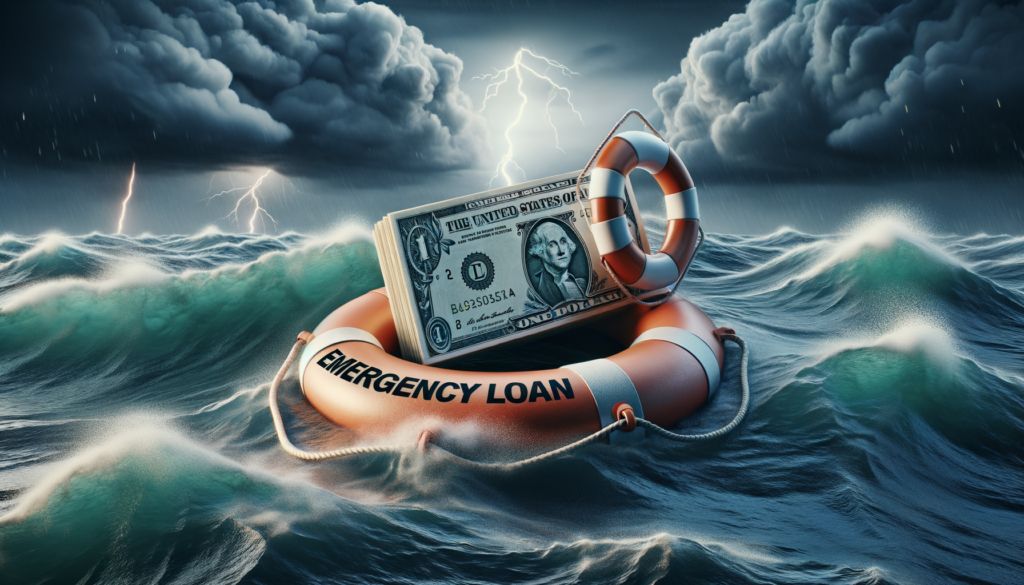The Gaming Blog

Emergency Loans
Understanding Emergency Loans
In times of financial distress, emergency loans can be a lifeline. These loans are designed to provide quick access to funds for unexpected expenses, such as medical emergencies, car repairs, or urgent home repairs. Unlike traditional loans, emergency loans often have a simplified application process and faster approval times, making them ideal for urgent situations.
Emergency loans can come in various forms, including payday loans, personal loans, and even cash advances from credit cards. Each type has its own set of terms and conditions, which can affect the total cost of borrowing. It’s crucial to understand these differences to choose the option that best suits your needs.
While emergency loans can be incredibly helpful, they often come with higher interest rates compared to regular loans. This is due to the increased risk lenders take on by providing fast cash with minimal checks. Therefore, it’s important to evaluate your repayment capabilities before opting for an emergency loan.
Types of Emergency Loans
Emergency loans are available in several forms, each catering to different financial needs and situations. Some of the most common types include:
- Payday Loans: Short-term loans designed to be repaid with your next paycheck. They are accessible but often come with high fees and interest rates.
- Personal Loans: Offered by banks and credit unions, these loans typically have lower interest rates and longer repayment terms. They require a credit check and may take longer to process.
- Cash Advances: Available through credit cards, cash advances provide immediate access to funds. However, they usually have higher interest rates and fees compared to regular credit card purchases.
Choosing the right type of emergency loan depends on your specific financial situation, the urgency of your need, and your ability to repay the loan. It’s essential to compare the terms and costs of each option before making a decision.
How to Apply for an Emergency Loan
Applying for an emergency loan is typically straightforward, but it requires careful consideration to ensure you make the right choice. Here are some steps to guide you through the process:
- Assess Your Needs: Determine the exact amount you need to cover your emergency expenses. Avoid borrowing more than necessary to minimize interest costs.
- Research Lenders: Look for lenders that offer favorable terms and quick processing times. Consider both traditional banks and online lenders to find the most suitable option.
- Check Requirements: Different lenders have different eligibility criteria. Ensure you meet the requirements before applying to avoid unnecessary rejections.
- Prepare Documentation: Gather necessary documents such as identification, proof of income, and bank statements to expedite the application process.
- Submit Your Application: Fill out the application form accurately and submit it along with the required documents. Be honest about your financial situation to improve your chances of approval.
Once approved, review the loan agreement carefully, paying attention to the interest rates, fees, and repayment terms. Ensure you understand all aspects of the loan before accepting the funds.
Pros and Cons of Emergency Loans
Emergency loans offer both advantages and disadvantages that borrowers should consider before applying. Understanding these can help you make an informed decision.
Pros:
- Quick Access to Funds: Emergency loans provide fast access to cash, often within a day or two, which is crucial during urgent situations.
- Minimal Requirements: Many emergency loans have lenient eligibility criteria, making them accessible to individuals with less-than-perfect credit scores.
- Flexible Options: With various types of emergency loans available, borrowers can choose the option that best fits their needs and repayment capabilities.
Cons:
- High Interest Rates: Due to the increased risk for lenders, emergency loans often come with higher interest rates compared to traditional loans.
- Short Repayment Terms: Some emergency loans, like payday loans, require repayment within a short period, which can be challenging for some borrowers.
- Potential for Debt Cycle: If not managed properly, emergency loans can lead to a cycle of debt, especially if borrowers take on multiple loans to cover previous ones.
Weighing these pros and cons is essential to determine if an emergency loan is the right solution for your financial needs.
Alternatives to Emergency Loans
While emergency loans can be a viable option for immediate financial relief, it’s worth exploring alternative solutions that might better suit your situation. Here are some alternatives to consider:
- Emergency Savings: Building an emergency fund can provide a financial cushion to cover unexpected expenses without the need for a loan.
- Borrowing from Friends or Family: If possible, consider reaching out to friends or family members for a temporary loan. This option may come with little to no interest but requires clear communication and trust.
- Credit Union Loans: Credit unions often offer lower interest rates and more flexible terms compared to traditional banks, making them a good alternative for emergency funding.
- Negotiating Payment Plans: If your emergency involves bills or debts, try negotiating a payment plan with your creditors to ease the financial burden.
Exploring these alternatives can help you avoid the potential pitfalls of emergency loans while still addressing your financial needs effectively.









